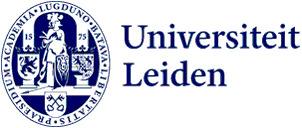
Bart Barendregt receives Vici grant for research on Artificial Intelligence in Muslim Southeast Asia
Very little is known about the relationship between religion and the digital future. Bart Barendregt, Professor by special appointment Anthropology of Digital Diversity, is about to change that. He receives a Vici grant of 1.5 million euros from the NWO for his research project 'One between the Zeros, an Anthropology of Artificial Intelligence in Islam'. Where Religion and digitalisation coexist, there is room for experiment, but ethical dilemmas emerge. Nowhere is this made more tangible than in the design and use of AI in Muslim Southeast Asia. How do digital religious futures help us reflect on the current digital transition?
Reflecting on the current digital transition
Both religion and technology are commonly looked at through extremes. In the case of AI (Artificial Intelligence), it tends to be done from a Western secular perspective. AI is generally defined as 'technologies with the ability to perform tasks that otherwise require human intelligence. Barendregt: 'Actually, there is no universal definition of AI. What AI is and what AI does are social constructs and this changes significantly depending on time and context. The different ideas and the resulting diverse claims on what the future might look like is the core of our research project.' By looking at the everyday use of AI within Islam from an anthropological perspective and by using innovative research methodology, Barendregt aims to provide better insight into the diverse and complex opinions surrounding artificial intelligence and contribute to the scientific discussions regarding AI.
Scientific discussion on artificial intelligence
Barendregt and his team look at where the creators and users of artificial intelligence and Islam meet. As an anthropologist, he is particularly interested in what is called "human-centered AI": what do new emerging technologies do to human relationships. Barendregt: 'I don't look at what AI can do, but I look at the perception of what we think AI can and will do in the future.' With this research he is specifically focusing on the contrasts of AI users in the Islamic world. Over the next five years, he will answer the question of who these creators and users are, how they reinforce each other, where they clash, and in what future visions this gained knowledge results. 'Usually, people look at AI as technology, something designed in a lab. That is certainly important, but AI technologies are also used "in the wild," in other words, outside the lab. Users sometimes do very different things with it than initially intended.' That is where Barendregt sees a clear similarity with the religious Islamic world. 'Ulama (Islamic scholars) and legal scholars prescribe how Islam should be interpreted, but the 'living religion' in the hands of users expresses itself in other ways.'
Where AI and Islam meet: Muslim Southeast Asia
Muslim Southeast Asia is the perfect place for research on AI and Islam due to the rapid development and implementation of digital technology. Barendregt focuses on three societies in Southeast Asia that are also representative of other parts of the Islamic world. In Malaysia, a constitutionally Islamic country with far-reaching state interference, the study looks at the role of AI in entertainment and streaming platforms such as Nurflix and Islamic Tunes. In Indonesia, the world's largest Muslim country with secular governance and a young orthodox middle class, the research focuses on AI education at two Islamic universities. Finally, in Singapore, a country where Muslims are a minority, the research focuses on apps and web portals that mandate a sharia-compliant lifestyle for the user in case of self-disciplining.
Innovative mix of research methods
Unique to Barendregt's research is the innovative mix of research methods. He uses big data analysis to provide insight into the history and diversity of future claims through AI in Islam. Classic anthropological ethnographic methods such as long-term observation, interviews and surveys in the three countries themselves provide deep data. The results of his research are presented in the form of ethnographics: interactive videos, infograpics and ethnographic drawings. These ethnographics will make the complex and invisible technologies understandable to a broad audience through, for example, an interactive website, podcasts and a graphic novel. Barendregt also wants to set up an AI literacy program with local partners in Southeast Asian countries. Besides, the research project contributes to UNESCO's desire for a more culturally sensitive approach to AI ethics.
